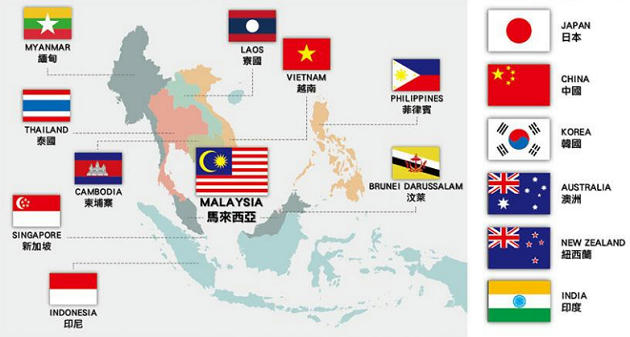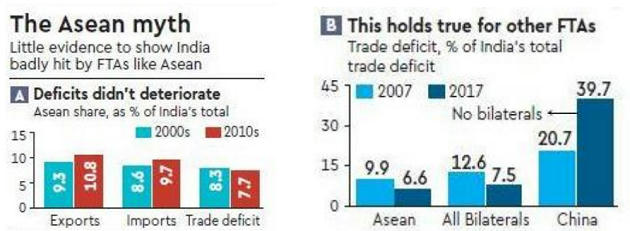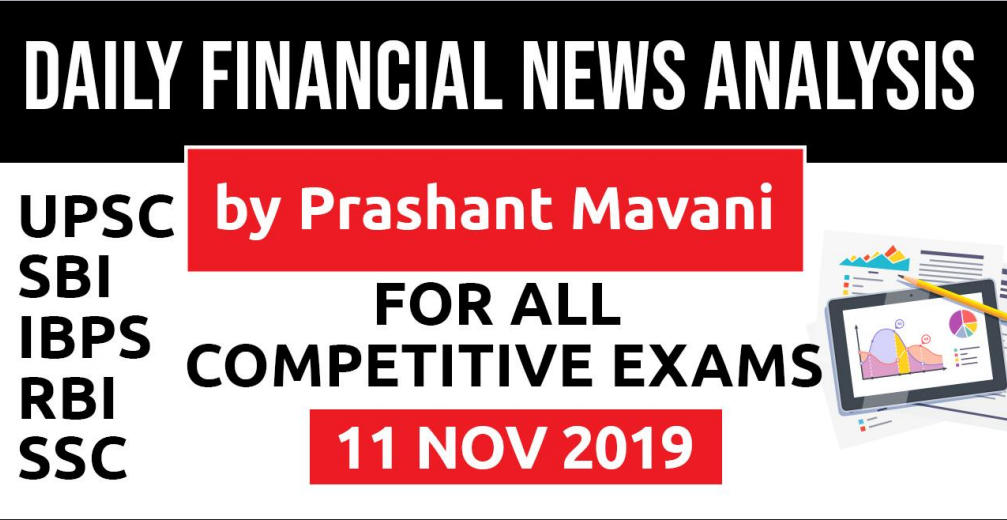Table of Contents
Can India do a FTA with US/EU?
- India walked out of RCEP
- Chinese imports will hurt India. Asean FTA is held up as an example of how FTAs are hurting.
- India’s interests are better served by concluding an FTA with the US or the EU.
- since both are higher-cost economies than India, India’s exports will also grow faster than, say, in an RCEP FTA. Asean FTA has hurt India is incorrect World’s fastest-growing region

- Countries in the RCEP are more competitive than India.
- They will continue to export more to the US/EU.

- 1990-2018: Vietnam’s overall exports grew 102 times versus just 18 for India—as a result, Vietnam’s exports are now 75% those of India’s.
- This makes it clear that the Asean FTA is hardly the issue.
- India’s lack of competitiveness is a factor that can’t be ignored.
- As India gets more inward-focussed—it has been raising import duties—it will get less competitive.
- What are we doing about our poor domestic policies?
- The sharpest deterioration in India’s deficit is with China, a country it has no FTA with; once again, FTAs are not the problem.
- There is a long gestation before any FTA gets actualised.
- Only about 16% of world trade takes place on a preferential basis.
- India has not even been able to resolve its dispute with the US on simple issues like duties on Harley Davidson motorbikes.
- It is not clear how soon India can sign an FTA with US/EU.
- An FTA with India, along the lines of the TPP that the US was working on, will presumably be as stringent.
Labour laws
- Intellectual property protection (India will have to grant patents to a lot more US drugs as US rules are more liberal than India’s)
- Reducing sops to PSUs
- The need for unfettered market access to US firms
- If lobby groups like Amul could stop an RCEP, surely they will try and do the same when the US/EU want even more market access and have even larger subsidy levels?
- Since most Indian markets will have to be opened, other lobbies will also get active.
Economy under stress
- Weakness could stretch into the next fiscal.
- Green shoots of a recovery in key indicators — from industrial production, exports and corporate sales to non-food credit growth — are barely visible.
- Economists, who were earlier optimistic about a rebound in the September quarter itself, are now much less sanguine.
- Unlikely to be a V-shaped recovery despite a favourable base.
- Compression in the government’s capital expenditure has a multiplier effect.
- The recent sharp corporate tax cut will draw private investments only in the medium term.
- Apart from that things need to improve on land and labour fronts.
- Pronab Sen, former chairman of the National Statistical Commission, said: Rural distress is the root cause of faltering demand in the economy.
- GDP growth projections to 4.9% y-o-y (from 5.7%) in 2019 and to 6.0% (from 6.9%) in 2020.
- The recent steps taken by the finance ministry, including those for MSMEs, NBFCs/HFCs and exports, will certainly help but their positive impact will flow in only after a time lag.
Diesel demand drops
- India’s diesel demand has slowed down sharply.
- Sluggish economy
- Structural changes like gst-induced road transport efficiency
- Trucks being allowed to carry a bigger load
- Increased power supply
- Consumer preference for petrol vehicles
- Diesel makes up 40% of India’s total oil demand
Income Tax task force report
- Govt revenue can boost by more than Rs 55,000 crore
- The report has suggested a radical shift to taxation approach.
- No prosecution or reopening of assessment for people who declare and pay higher income tax for a past period of up to six years with interest and 50 per cent penalty.
- The report has also suggested new income-tax slabs of
- 10%: up to Rs 10 lakh per year
- 20%: over Rs 10 lakh – Rs 20 lakh
- 30%: over Rs 20 lakh – Rs 2 crore
- 35%: for individuals earning more than Rs 2 crore
The current IT rates are
- % 5% + 4% cess: Rs 2.5 lakh – Rs 5 lakh,
- 20% + 4% cess: more than Rs 5 lakh up to Rs 10 lakh
- 30% + 4% cess: for those earning over Rs 10 lakh
- The task force has suggested removal of surcharge that ranges between 15- 37

50th WEF annual meet
- Over 100 Indian CEOs, several political leaders and select Bollywood stars including Deepika Padukone will be in the Swiss ski resort town of Davos.
- Discussion on what requires to make it a ‘cohesive and sustainable world’ .
- 2020 Theme: ‘Stakeholders for a Cohesive and Sustainable World
- ‘ 1971 forum’s first meeting: Business should serve all stakeholders -– customers, employees, communities, as well as shareholders.
- It was reaffirmed in 1973 in the ‘Davos Manifesto’, a document that has shaped the work of the WEF ever since.
Download Free PDF






















 WhatsApp
WhatsApp